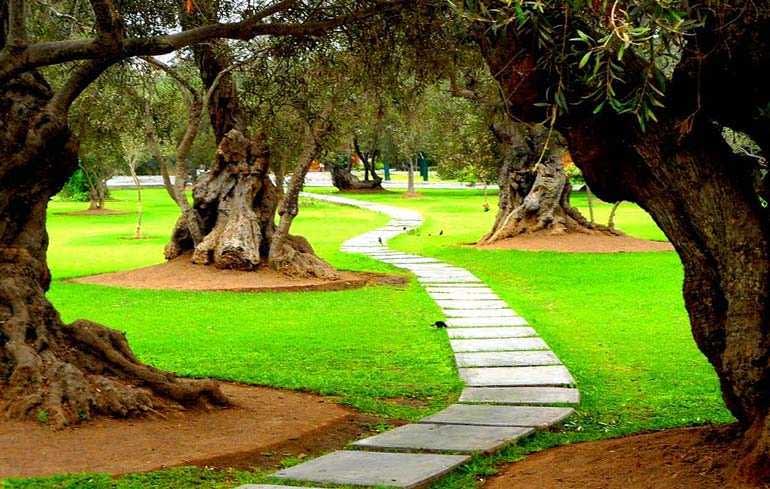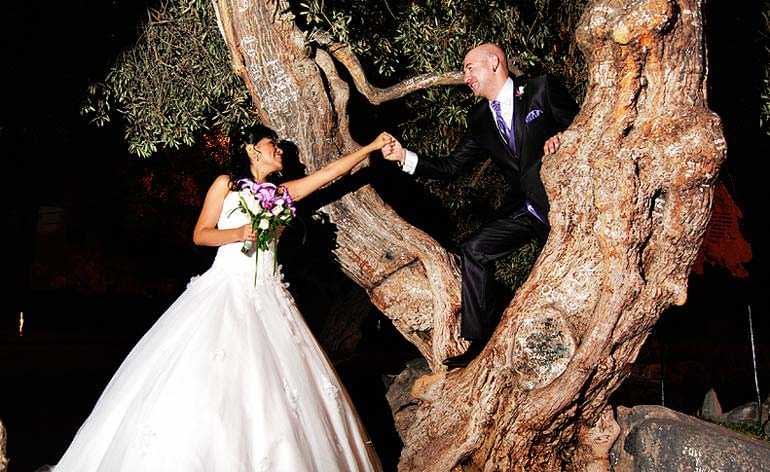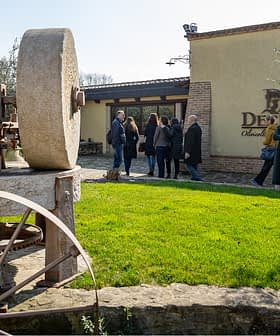
There are many many things to love about Lima, Peru; among them, the daily caress of the metropolis’s mild climate, the city’s Viceroyal and Baroque architecture, its mid 20th Century architecture, the fascinating Barranco neighborhood, the richness of readily available indigenous craft, the city’s pale and muted palette of urban colors, the city’s interaction with the Pacific Ocean, and the astonishing central cemetery. But, for me, in Lima there is nothing as quietly exhilarating nor as daily calming as its courtly Parque El Olivar, its Olive Grove Park, in the flourishing San Isidro district of the city. With foresight, Parque El Olivar was declared a Peruvian National Monument in 1959.
The real story of El Olivar dates from 1560 when Antonio de Rivera brought the first olive plants from Sevilla, Spain. Only three of these plants survived their arduous Atlantic journey, but these three were duly planted and they thrived. El Olivar had its beginning. Just about two hundred years later, more than 2,000 olive trees were recorded in the olive grove. By the time Peru became an independent state in 1821, there were close to 3,000 olive trees in El Olivar. However, on their way out and as a parting gesture to their former colony, some Spaniards chopped down and generally mutilated many of the olive trees of El Olivar.
Even though the grove survived, to this day you can see the injury to the older trees in the park. Bosque El Olivar, (the Olivar Woods) as the park is sometimes referred to, was once upon a time an extensive olive farm owned by the Count of San Isidro. El Olivar was located well away from downtown Lima, 6 kilometers from the central Plaza de Armas. In time, the Count found himself immersed in financial difficulties, and ownership of the grove changed hands. And then changed hands again. And then again, until the 1920’s when the Count of San Isidro’s El Olivar was subdivided into 41 lots for sale. Houses began to be built and the San Isidro neighborhood developed around the olive grove Parque El Olivar.
Today there are somewhere around 1,675 olive trees in the 57 acres of the original olive grove that were incorporated as a park. And one of the present day attractions of the park is the way in which is seamlessly melds into the surrounding neighborhood. Many older olive trees appear to have jumped the boundaries of the park and show up in the gardens of the adjacent houses. When these houses were built in the 1920’s, the 1930’s and later, their owners integrated the existent olive trees into their front and back yards.
Parque el Olivar is an oasis in the city of Lima. The park is the perfect place to laze away an hour or more mid-morning or mid-afternoon. Courting couples come, many to propose marriage it is said. Newly married couples come to be photographed among the olive trees. Nannies come to walk their wards. Older residents come to sit, walk and talk. The park is a haven for dog owners. And a wide variety of birds make the park home; there are more than 30 species here. Placards throughout the park help identify the birds. And you are allowed to feed the birds; you can buy birdseed in the kiosks in the park.

And yes, the olives are harvested. In 2011, there was an abundant olive crop in Parque El Olivar. Between one and two tons of olives were distributed in the neighborhood, and some were pressed into gift bottles of olive oil.
The municipality of San Isidro offers free guided tours of the park, “Conociendo el Bosque El Olivar” (“Getting to know the Olive Woods”). You can reserve a guided walk by calling locally 513 9000 extension 1811, or by sending an email to turismo@munisanisidro.gob.pe or info.turismo@munisanisidro.gob.pe.








